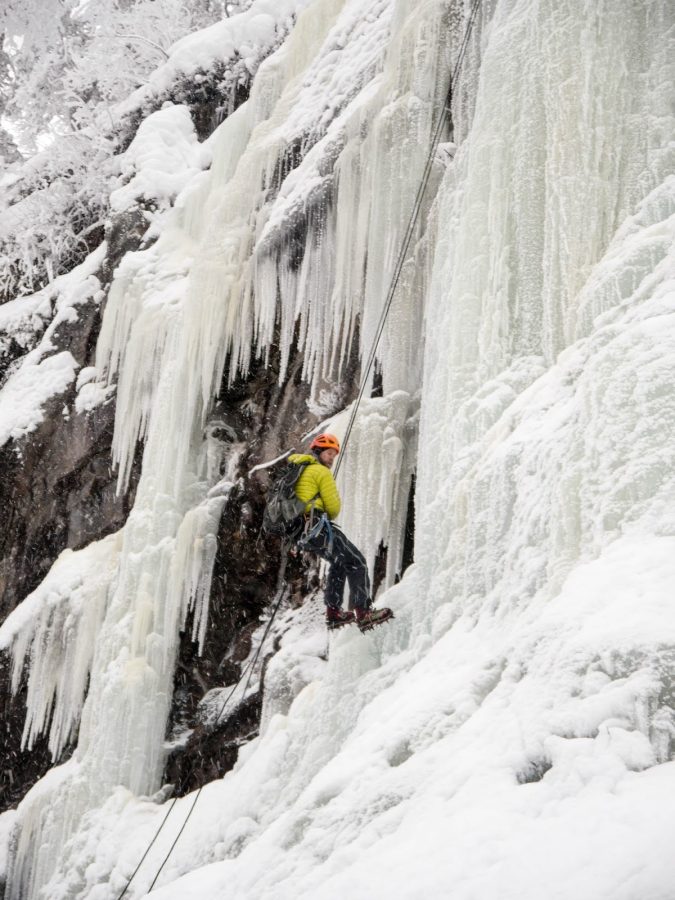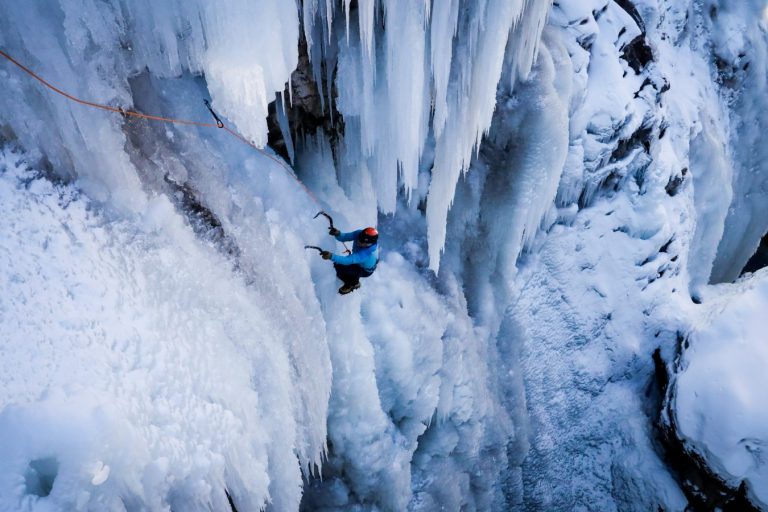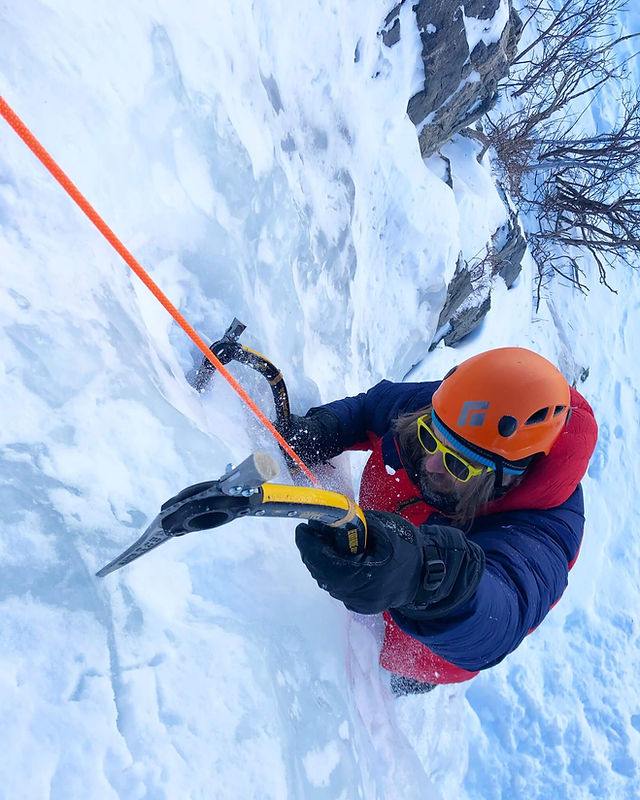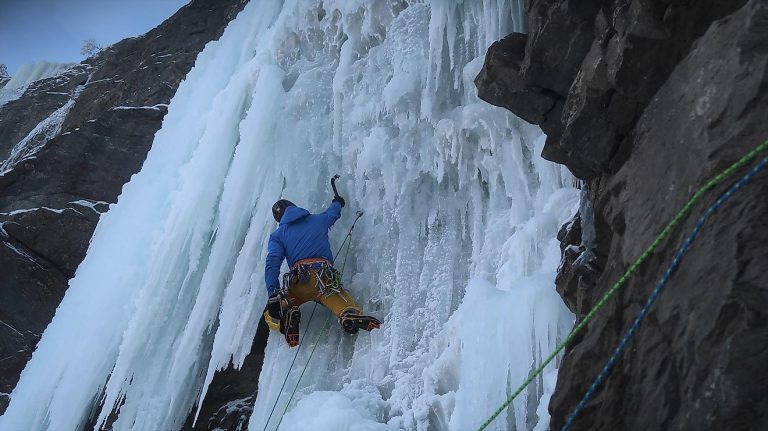Waterfall Ice Climbing: A Thrilling Adventure
Introduction to Waterfall Ice Climbing
Waterfall ice climbing is an exhilarating winter sport that combines the thrill of scaling frozen waterfalls with the beauty of winter landscapes. This unique activity requires a combination of physical fitness, technical skill, and mental fortitude, as climbers navigate the ever-changing terrain of ice formations. If you’re interested in embarking on this frozen adventure, read on to learn about the essential gear, techniques, and safety precautions required for waterfall ice climbing.
Essential Gear for Ice Climbing
Before you venture into the world of waterfall ice climbing, it’s important to have the right equipment. Here’s a list of essential gear to get you started:
Ice Axes
Ice axes, also known as ice tools, are specifically designed for ice climbing. They come in various lengths and shapes and are used to gain purchase on the ice. With a curved shaft and a sharp pick, ice axes help climbers maintain balance and move upward.
Crampons
Crampons are metal spikes that attach to your boots, providing grip and stability on the ice. There are several types of crampons, with some designed specifically for ice climbing. Look for crampons with vertical front points, as these offer better penetration and stability on steep ice.
Harness, Ropes, and Carabiners
A climbing harness is essential for safety, and it’s used in conjunction with ropes and carabiners to secure the climber. There are specialized ice climbing harnesses with additional gear loops for ice screws and other tools. Make sure your harness fits comfortably over your winter layers.
Helmets and Gloves
Protecting your head and hands is crucial when ice climbing. A sturdy helmet can protect you from falling ice, while insulated, waterproof gloves provide warmth and dexterity.
Clothing and Layering
Dressing appropriately for the cold and wet conditions of ice climbing is essential. Opt for moisture-wicking base layers, insulating mid-layers, and waterproof outer layers to stay warm and dry. Don’t forget a good pair of warm, waterproof boots.
Choosing the Right Waterfall Ice Climb
Evaluating Ice Conditions
Ice conditions can vary dramatically, so it’s important to assess the quality of the ice before attempting a climb. Look for solid, blue ice, which is generally the most stable. Avoid climbing on thin, brittle, or discolored ice, as it may be unstable.
Grading System for Ice Climbing Routes
Ice climbs are graded using the WI (Water Ice) system, which ranges from WI1 (easy) to WI7 (extremely difficult). The grading system takes into account the steepness, length, and complexity of the route. As a beginner, it’s best to start with lower-graded climbs to gain experience and confidence before attempting more challenging routes.
Techniques for Climbing Ice Waterfalls
Once you’ve chosen your climb and geared up, it’s time to learn some basic techniques for scaling frozen waterfalls.
Vertical Ice Climbing Technique
Vertical ice climbing is the most common technique used when tackling steep ice formations. To climb using this technique, follow these steps:
- Swing your ice axe into the ice above your head, aiming for a solid placement.
- Kick your front-pointed crampons into the ice, maintaining a stable stance.
- Move one of your feet higher, followed by the opposite hand.
- Continue this pattern, alternating hands and feet, as you ascend the ice.
Remember to maintain a steady rhythm and stay relaxed. Keep your heels down to avoid calf fatigue, and use your legs more than your arms to conserve energy.
Mixed Climbing Technique
Mixed climbing involves ascending a combination of ice, rock, and snow. This technique requires a blend of ice climbing and traditional rock climbing skills. When mixed climbing, use your ice tools to hook onto rock features, and place your crampons on small ledges or other rock protrusions. Be prepared to switch between ice and rock climbing techniques as the terrain demands.
Staying Safe While Ice Climbing
Waterfall ice climbing can be a dangerous activity, so it’s important to prioritize safety.
Identifying Hazards
Be aware of potential hazards, such as falling ice, unstable ice formations, and hidden crevasses. Keep a safe distance from other climbers, and always wear a helmet to protect yourself from falling ice.
Avalanche Awareness
Avalanches are a serious concern when ice climbing in the mountains. Educate yourself on avalanche safety, check the local avalanche forecast, and carry appropriate safety equipment, such as an avalanche beacon, shovel, and probe.
Conclusion
Waterfall ice climbing is a thrilling and challenging winter sport that offers a unique way to experience the beauty of frozen landscapes. With the right gear, proper techniques, and a focus on safety, you can embark on an unforgettable icy adventure. Before you go, consider the following FAQs for additional information.
FAQs
- Is waterfall ice climbing suitable for beginners? Yes, beginners can participate in waterfall ice climbing with proper instruction and guidance. Start with lower-graded climbs and gradually progress to more difficult routes as you gain experience.
- What’s the best time of year for waterfall ice climbing? The prime season for waterfall ice climbing is typically during the winter months when temperatures are consistently below freezing. This ensures that the ice is stable and safe to climb.
- How can I learn to ice climb? You can learn to ice climb by taking a course or hiring a certified guide. Many outdoor centers and guide services offer beginner ice climbing courses, which cover essential skills and safety techniques.
- Do I need a climbing partner for waterfall ice climbing? It’s highly recommended to have a climbing partner when ice climbing for safety reasons. A partner can help with belaying, route finding, and assistance in case of an emergency.
- Can I use my rock climbing gear for ice climbing? While some rock climbing gear, such as harnesses and carabiners, can be used for ice climbing, specialized ice climbing equipment, like ice axes and crampons, is necessary for success and safety on the ice.



